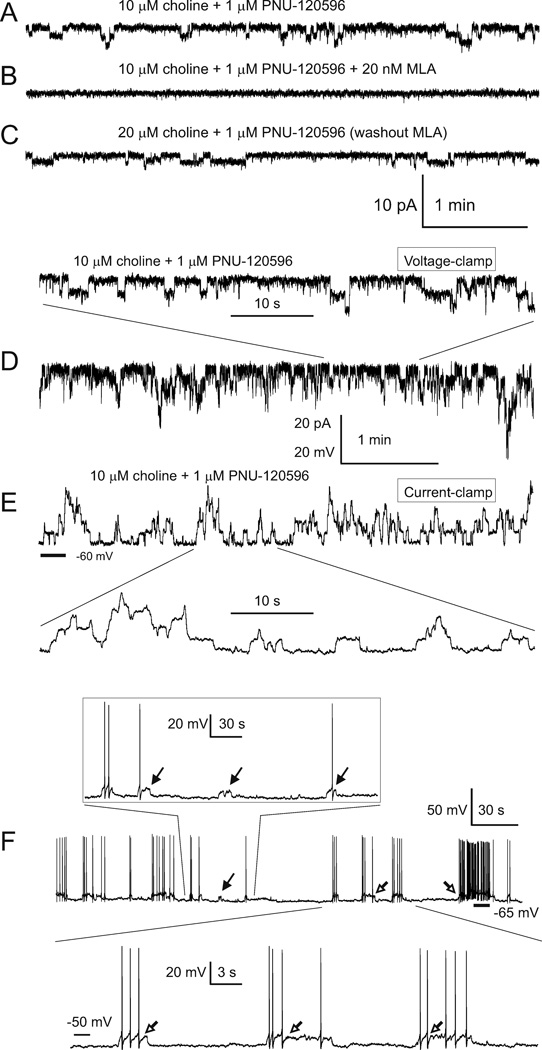Figure 4. Step-like current and voltage deviations in the presence of 10 µM choline and 1 µM PNU-120596 in ACSF.
A–C) Current deviations were completely and reversibly blocked by 20 nM MLA, confirming the involvement α7 nAChRs. All current traces in A–C) were obtained from the same TM neuron. D–E) Step-like responses were observed in both voltage-(D) and current-clamp (E) recordings. Traces in D) and E) were obtained from the same TM neuron 1 min apart. In these experiments, the frequency of step-like current events appeared to be sensitive and rapidly responsive to changes in the ACSF concentrations of choline and PNU-120596 (34; 35). Activation of α7 nAChRs in current-clamp elicited transient repetitive step-like depolarizations: ~4 mV for individual events and ~25 mV for simultaneous multiple events (E). The bottom trace in D) and the top trace in E) share the same time scale shown between these traces. The vertical scale bar indicates either 20 pA (for traces in D) or 20 mV (for traces in E). In experiments shown in D–E), 0.3 µM TTX was continuously present in ACSF and the internal pipette solution contained CsMeSO3. In voltage-clamp experiments, the membrane voltage was held at −60 mV. F) To visualize individual step-like depolarizations, a small continuous hyperpolarizing current (−5 pA) was injected into the recorded neuron resulting in cessation of spontaneous firing. Under these silent conditions, transient step-like depolarizations triggered short trains of action potentials (open arrows). However, occasionally, depolarizations did not trigger action potentials or triggered only a single action potential per depolarization (filled arrows). Step-like voltage and current deviations were resistant to 20 µM gabazine, 15 µM DNQX, 50 µM AP-5, 40 µM picrotoxin, and 0.3 µM TTX applied to ACSF. Reprinted from (34) with permission from ASPET.

